The Global Reference Representations component provides a centralized space for reference display configurations. Any number of configurations can be stored for different reference types and under various display conditions.
Note: This component is only compatible with the Globally Configured Reference component. Other components that display references are configured within the components themselves. For more information, refer to the Globally Configured Reference topic.
Prerequisites
It is expected that anyone configuring the Global Reference Representations component is familiar with the Web UI Designer, as basic concepts for working with the designer are not covered in this section. In addition, the user must have appropriate privileges to access the designer. Additional information can be found in the Designer Access topic.
Initial Setup
Before reference display configurations can be created, the component must be configured in MAIN properties.
- Enter design mode and select --[MAIN]-- from the screen dropdown list.
- Go to the Global Representation List parameter.
- Click the Add... button under the value field.
- Select Global Reference Representations from the Add Component dialog.
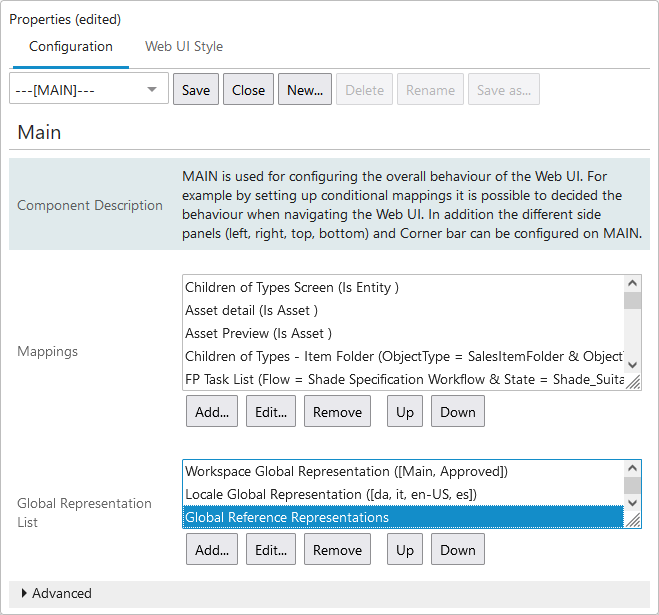
Creating a Configuration
Once the component has been added to MAIN properties, any number of reference representations can be created within it. A representation is a series of configuration settings tied to a reference type. Within each representation, the relevant reference type must be specified, along with its display settings.
If multiple reference types require configuration, a separate representation must be created for each one. Additionally, if display settings vary due to which screen they appear on, multiple views must be created within each representation.
- Double click on Global Reference Representations from within the Global Representation List field.
- In the Global Reference Representations Properties window, click Add... to add a new representation.
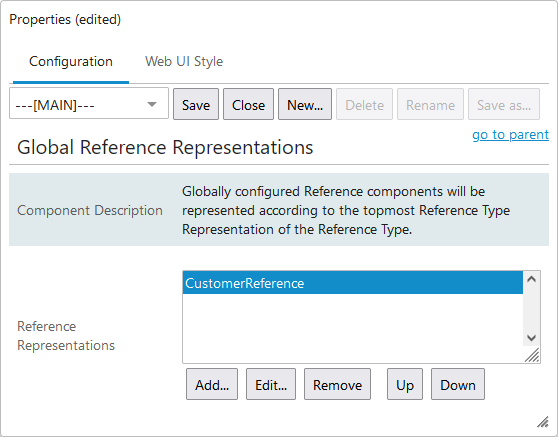
- When the Reference Type Representation Properties window appears, specify the relevant reference type, along with its display options and the conditions in which this particular representation should be applied.
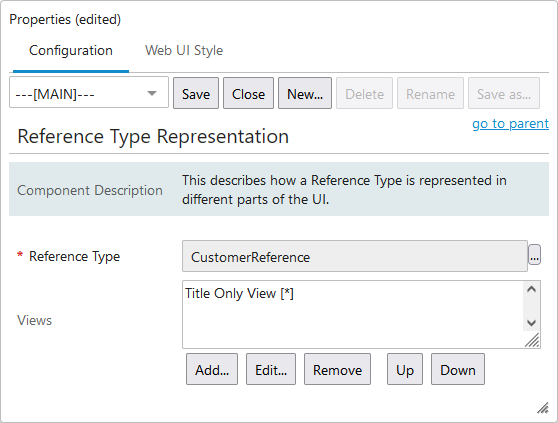
- To specify the reference type, click the ellipsis button (
 ) under the Reference Type parameter. Browse or search for the relevant reference type, select it, and click OK.
) under the Reference Type parameter. Browse or search for the relevant reference type, select it, and click OK.
- Several different ways of displaying the specified reference type can be configured via the Views field. The view used to display the data is determined by conditions set on each view instance. If more than one view setting is valid for the specified reference type, the view that appears highest on this parameter's list is used.
To create a view configuration, click Add... under the Views parameter.
- Select 'Title Only View' or 'Title with Unfold View'. The latter should be chosen if the view is intended to be used on an Unmerge Screen, otherwise choose Title Only View.
For more information, refer to the Configuring Unmerge in Web UI section of the Matching, Linking, and Merging documentation.
Configure Title Only View
- Double click the newly created view to access the Title Only View Properties window.
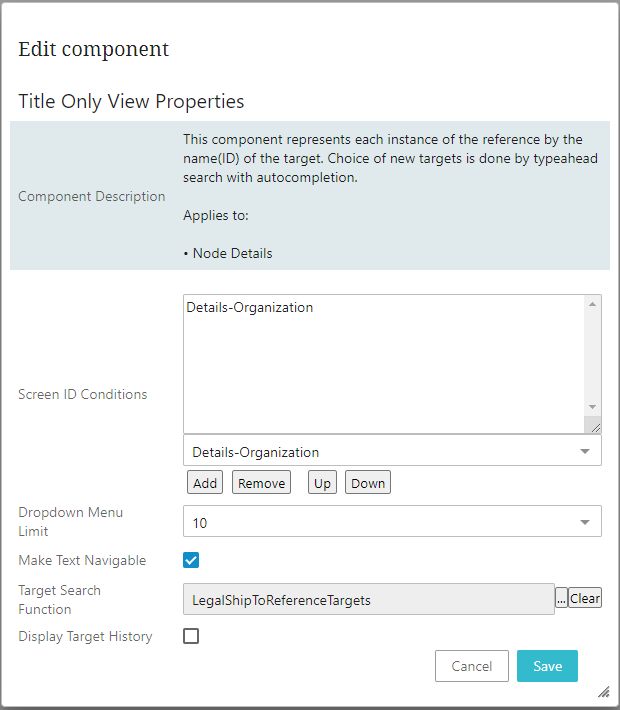
Configuration options for each view include:
- Screen ID Conditions - Select a screen mapping from the dropdown and click Add.... Mapping a screen ensures that these view settings are only valid for displaying the data of the relevant reference type on the specified Web UI screen. Not mapping a screen allows these view settings to apply to references on any screen in the Web UI.
- Dropdown Menu Limit - Specify the maximum number of potential reference targets that are listed in the Globally Configured Reference component dropdown.
- Make Text Navigable - Enabling this option allows users to navigate to a referenced node by clicking directly on the text of the reference from within the Globally Configured Reference component.
- Target Search Function - Use a Business Function to search for a reference target. To read more about this functionality, refer to the Custom Reference Target Search topic.
- Display Target History - Enabling this option allows users to display history for globally configured references on a Node Details screen.
Note: The target history will not be displayed for globally configured references that are externally maintained.
- Once the view settings have been finalized, click Save.
Title with Unfold View
- Double click the newly created view to access the Title with Unfold View Properties window.
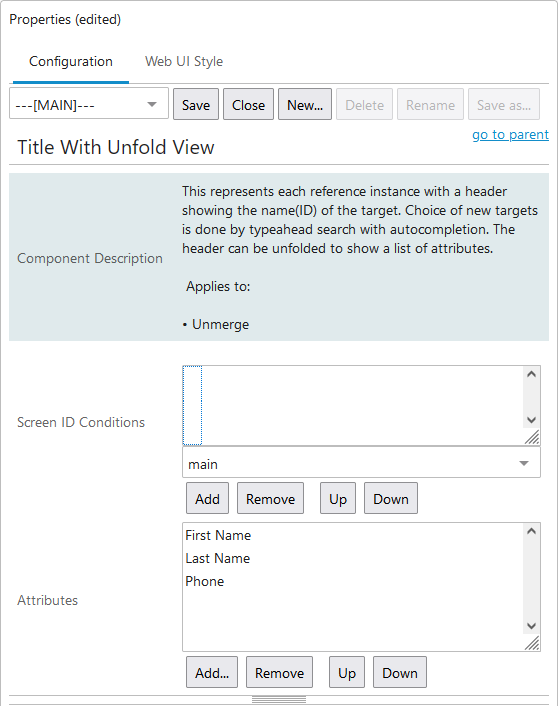
Configuration options for each view include:
- Screen ID Conditions - Select a screen mapping from the dropdown and click Add.... Mapping a screen ensures that these view settings are only valid for displaying the data of the relevant reference type on the specified Web UI screen. Not mapping a screen allows these view settings to apply to references on any screen in the Web UI.
- Attributes - Click Add... and browse or search for the attributes that should be displayed by the corresponding components when unfolded.
- Once the view settings have been finalized, click Save.